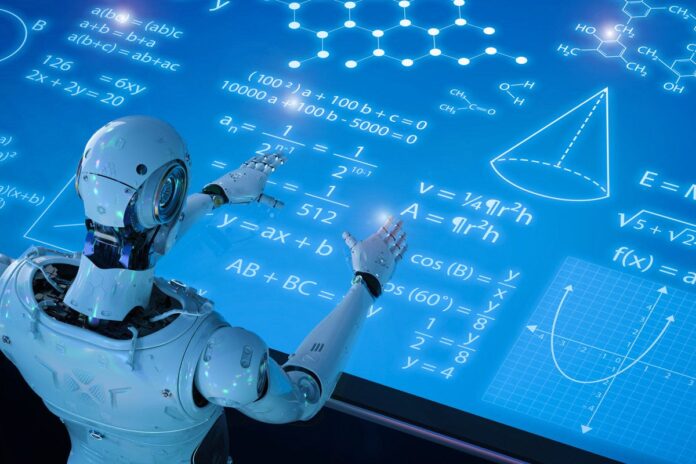Introduction:
In recent years, the field of robotics has witnessed remarkable advancements, revolutionizing the way we live and work. Robots, once confined to science fiction, have now become an integral part of various industries. From manufacturing and healthcare to agriculture and space exploration, robotics has made significant contributions, enhancing efficiency, productivity, and safety. This article explores the advancements in robotics and its diverse applications across different sectors.
Manufacturing Industry:
The manufacturing industry has been at the forefront of robotic applications for decades. Industrial robots have transformed assembly lines and production processes, streamlining operations and improving quality. Advanced robotic arms with high precision and speed can perform repetitive tasks with unparalleled accuracy, reducing human error and increasing productivity. Collaborative robots, known as cobots, are also gaining popularity, working alongside human workers to enhance efficiency and safety in manufacturing plants.
Healthcare Industry:
Robotic advancements have revolutionized the healthcare industry, offering immense potential for diagnosis, surgery, rehabilitation, and patient care. Surgical robots, such as the da Vinci Surgical System, enable minimally invasive procedures with enhanced precision and dexterity. They provide surgeons with a 3D view of the operating field and enable smaller incisions, resulting in reduced pain, faster recovery, and minimal scarring. Additionally, robots are being used for tasks like medication delivery, patient monitoring, and physical therapy, alleviating the workload of healthcare professionals.
Agriculture and Farming:
Robotics is making significant strides in the agricultural sector, addressing challenges related to labor shortage, increasing efficiency, and sustainable farming practices. Autonomous robots equipped with advanced sensors and computer vision can perform tasks like planting, harvesting, and monitoring crop health. They can precisely apply fertilizers and pesticides, optimizing resource usage and reducing environmental impact. Drones equipped with imaging technology can provide real-time data on crop health, allowing farmers to make informed decisions. Robotic milkers and automated feeding systems are also transforming the livestock industry.

Logistics and Warehousing:
The logistics and warehousing industry has embraced robotics to meet the growing demands of e-commerce and efficient inventory management. Automated guided vehicles (AGVs) and autonomous mobile robots (AMRs) are utilized for material handling, order picking, and warehouse navigation. These robots can work collaboratively with human workers, increasing operational efficiency and reducing the risk of injuries caused by manual lifting and repetitive tasks. Furthermore, robots equipped with machine learning algorithms can optimize routes, reducing delivery time and fuel consumption.
Space Exploration:
Robotics plays a crucial role in space exploration, allowing us to delve deeper into the mysteries of the universe. Robotic rovers, such as NASA’s Mars rovers, have provided valuable insights into the Martian surface, conducting experiments and collecting samples. These rovers are remotely controlled from Earth, navigating harsh terrains and transmitting vital data back to scientists. Additionally, autonomous robots are being developed for tasks like satellite servicing, asteroid mining, and space station maintenance, expanding our capabilities in space exploration.
Construction Industry:
The construction industry is witnessing the integration of robotics to improve safety, precision, and efficiency in various construction processes. Robotic arms equipped with advanced sensors and cameras can perform tasks like bricklaying, concrete pouring, and welding. These robots can work tirelessly, reducing labor costs and project timelines. Drones are also used for surveying and monitoring construction sites, capturing aerial images and generating 3D models for better planning and project management.
Education and Research:
Robotics has found its way into educational institutions, providing students with hands-on experience and fostering interest in science, technology, engineering, and mathematics (STEM) fields. Educational robots are designed to teach programming, problem-solving, and critical thinking skills in an interactive and engaging manner. Research in robotics is also expanding, pushing the boundaries of artificial intelligence, machine learning, and human-robot interaction, paving the way for future advancements and breakthroughs.
Conclusion:
The advancements in robotics have unleashed a wave of innovation, transforming various industries and pushing the boundaries of what was once considered possible. From manufacturing and healthcare to agriculture and space exploration, robots are revolutionizing the way we live and work. With ongoing research and development, robotics will continue to evolve, opening up new opportunities for increased efficiency, safety, and sustainability across a wide range of sectors. As we move forward, it is essential to embrace and harness the potential of robotics to shape a better future for humanity.

